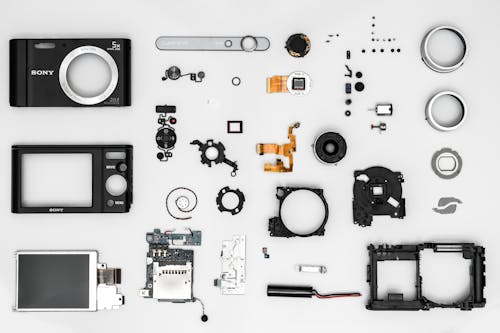Die-cast aluminum alloys are widely used among home cooks due to their lightweight and durability. Cast aluminum pans are ideal for spreading the heat equally throughout the pan’s surface.
What is Die Cast Aluminum Alloys?
“Alloy” describes a “compound material” made of aluminum metal and additional substances to enhance specific properties. Other elements may include zinc, magnesium, silicon, or copper.

Die cast aluminum alloys are a type of aluminum used to create finished die cast aluminum parts. These alloys are heated to a liquid state, injected into the mold cavities under intense pressure, and then cooled. Die cast aluminum China can be formed into a variety of sizes and shapes for a variety of different industries.
Aluminum Alloy Characteristics
- Excellent EMI and RFI shielding properties,
- Very good stiffness, and strength-to-weight ratio,
- High operating temperatures,
- High electrical conductivity,
- Exceptional corrosion resistance,
- Excellent thermal conductivity,
- Lightness,
- Good finishing characteristics,
- Full recyclability
Advantages and Features of Using Aluminum Cookware
The process of creating cast aluminum cookware involves pouring molten aluminum into a mold and letting it cool. It heats up rapidly and evenly because it is a great heat conductor. Die cast aluminum cookware is long-lasting and lightweight, making it simple to handle.
Heat Conduction and Cooking Efficiency in Aluminum Cookware: A Scientific Analysis
Aluminum cookware has exceptional heating capabilities. The cookware’s aluminum heating core allows it to retain heat effectively. As a result, it is an effective option for experienced chefs who want to cook effectively and rapidly.
The molecular structure of the metal is the cause of its exceptional heat conductivity. Aluminum’s atoms are arranged in a certain way that makes it possible for it to conduct heat quickly and effectively. Aluminum molecules vibrate quickly when heat arrives at their surface, passing energy from one molecule to the next until every molecule reaches the same temperature.
How to Save Time and Energy Using Aluminum Cookware
Die cast aluminum cookware saves time and energy by heating up quickly and consistently. For example, using an aluminum wok would enable you to cook anything quickly without waiting for various areas of the pan to heat up when preparing a stir-fry dish with veggies and meat.

Overall, less energy is utilized because cooking takes less time because of effective heating characteristics. Therefore, aluminum cookware qualifies as an environmentally responsible choice for individuals who want to lower their environmental impact while still enjoying excellent food.
Since energy is transferred quickly in an aluminum pan, food placed in one will begin to cook almost immediately.
There are no hot or cold areas on the pan where food could burn or continue to cook unevenly because all parts quickly reach the same temperature.
The Process Used to Make Die Cast Aluminum Cookware
The production of aluminum cookware is an amazing combination of old-world creativity and modern technology. Each component must go through a complex process to make sure it is strong, resilient, and well-suited for heat conductivity. Here’s an overview of the production of aluminum cookware.
Purchasing of Raw Materials: Purchasing high-quality aluminum is the first stage in the production of aluminum cookware since it is portable, highly conductive, and rust-resistant.
Melting and Casting: A large furnace with high temperatures is used to melt the aluminum. It is poured into molds that match the intended shape of the cookware once it has reached the liquid stage. Aluminum takes on the precise shape of the cookware after cooling.
Machining: The shape of the raw materials needs to be improved. The processes that remove extra material and produce a smooth, even surface include trimming, milling, and lathing.
Surface Quality: According to the type of product, a surface treatment can be used. A non-stick coating may be applied, or anodizing may be used to boost durability and corrosion resistance.
Inspection and Quality Control: The quality of each piece of cookware is examined. They are examined for flaws like rough surfaces or inconsistent coatings.
Packaging and Shipping: When everything has been cleared, the cookware is packaged and ready to be shipped to stores or customers.
How to Pick the Top Aluminum Die Casting Supplier
Whether you’re a restaurant owner, a merchant, or a home cook looking for the highest quality for your kitchen, picking the correct aluminum supplier is crucial. Here are some crucial aspects to consider before making your decision:
- Variety of Products
- Price and Value
- High-Quality Materials and Craftsmanship
- Production Standards and Safety
- Reputation and Reviews
Conclusion
Die cast Aluminum cookware is famous among both home cooks and restaurant chefs. It is widely known for being affordable and having excellent heat conductivity, which makes it the perfect material for cooking food. However, there are numerous issues with aluminum’s potential health hazards.








